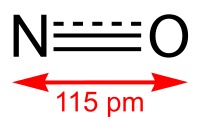
Photo from wikipedia
Vegetable production systems are hotspots of nitrous oxide (N2O) emissions and antibiotic pollution. However, little is known about the interconnections among N2O emissions, vegetable growth, and antibiotic contamination. To understand… Click to show full abstract
Vegetable production systems are hotspots of nitrous oxide (N2O) emissions and antibiotic pollution. However, little is known about the interconnections among N2O emissions, vegetable growth, and antibiotic contamination. To understand how plants regulate N2O emissions from enrofloxacin (ENR)-contaminated soils, in situ N2O emissions were measured in pot experiments with cherry radish and pakchoi. Gross N2O production and consumption processes were discriminated based on an acetylene inhibition experiment. Results indicated that vegetable growth decreased the cumulative N2O flux from 0.71 to -0.29 kg ha-1 and mitigated the ENR-induced increase in N2O emissions. Radish displayed better mitigation of N2O emissions than pakchoi. By combining the analysis of N2O flux with soil physicochemical and microbiological properties, we demonstrated that growing vegetables could either promote gross N2O consumption or decrease gross N2O production, primarily by interacting with soil nitrate, clade II nosZ (nosZII)-carrying bacteria, and Deinococcus-Thermus. ENR inhibited N2O consumption more than N2O production, with the nosZII-carrying bacteria, represented by Gemmatimonadetes, as the main inhibition target. However, increasing nosZII-carrying bacteria by growing radish offsets the inhibitory effect of ENR. These findings provide new insights into N2O emissions and antibiotic pollution in vegetable-soil ecosystems and broaden the options for mitigating N2O emissions.
Journal Title: Environmental science & technology
Year Published: 2022
Link to full text (if available)
Share on Social Media: Sign Up to like & get
recommendations!